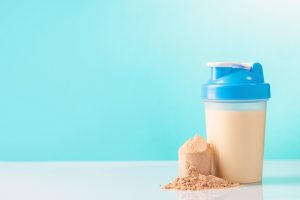
If you’re 60 or older, I’d say absolutely yes.
The reason is that despite the fact that protein shakes are about as ultra-processed a food as you can get, they offer a significant bang for their buck.
But there is a catch.
As mentioned, they are a great way to get a good serving or two of protein per day. And as most people’s appetite tends to diminish with age, it’s a great way to get protein without having to eat more.
The catch is that if your only protein intake each day is coming from protein shakes, it is unlikely to offer much benefit. These supplements will only have tangible benefits if they are helping you reach your daily recommended protein intake.
A number of health bodies are recommending that older Americans, at risk for muscle loss, get about 2 grams of protein for each kilogram of bodyweight.
Buying a protein powder can be a daunting task, but the market has shifted over the years. It has moved beyond being a product explicitly marketed towards athletes and is now targeted at various demographics.
Some of the things you’ll want to look for are serving size and ingredients. Whey protein is preferable, and you’ll even find some distinction in this category. Whey is essentially leftover protein from making dairy products, so it’s animal-based.
The more whey has been refined, the less you’ll have in it. Pure whey protein will have a more diverse nutrient profile than whey isolate or whey hydroisolate, which are as close to pure protein as you can get. Pure whey is generally recommended as a great option for most people.
There are also plant-based protein powders available. They don’t tend to mix as well as whey protein and may cost a little bit more, or be quite cheap. Rice protein powders, for example, are very cheap, but they are not necessarily a great option.
Most protein powders should have 26-30 grams per serving. One or two servings per day should help most people reach their daily intake, provided they are consuming more throughout the day.